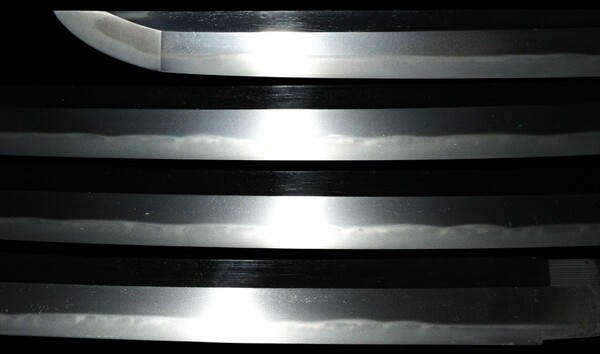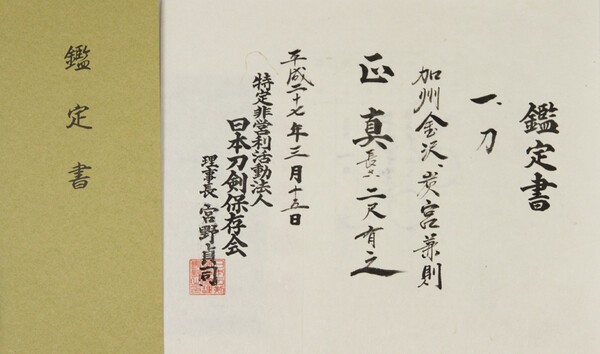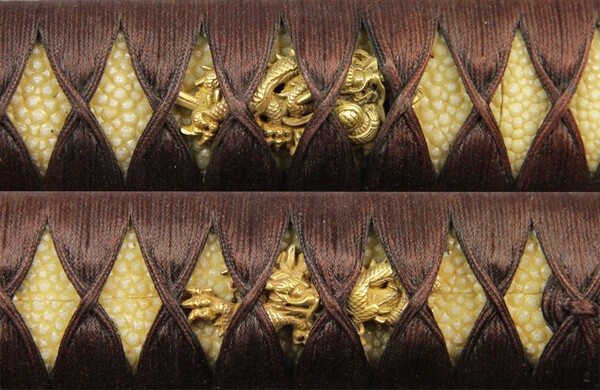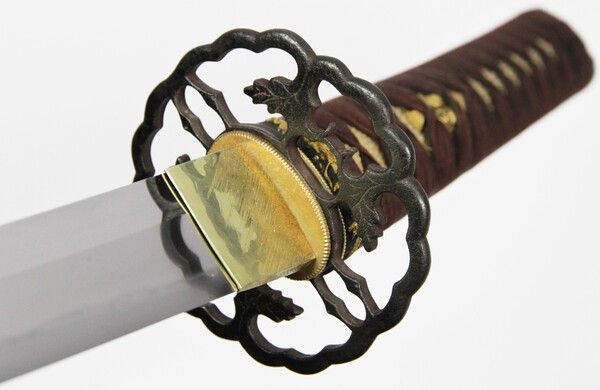-
Posts
1,486 -
Joined
-
Last visited
Content Type
Profiles
Forums
Events
Store
Downloads
Gallery
Everything posted by drbvac
-
The fittings are actually as stated the best part of the purchase but the kojiri and kashira match and with no Fuchi I wonder if in fact the blade did not match the mounts? The fact the Kojiri is not with them and the fuchi looks like it was tied on after I would be skeptical = that said - be very careful with the blade in any attempt to remove the rust.
-
Pretty good deal for any papered blade and this one is very nice ~~
-
I wouldn't do much more than you are suggesting - certainly not any abrasive or grinding. They are in a certain price range because of their military significance and not for the art value or significance of the blade itself. There are lots of specimens around in much better condition so now you are aware of what you have - do a search for other examples. All militaria are in the same market and prices are supply and demand with best condition and rarity commanding the highest prices - I used to collect WW2 German military dress daggers and there were many variations and prices all over the map.
-

WW2 Japanese Navy sword (Sukesada)
drbvac replied to Swords's topic in Auctions and Online Sales or Sellers
I am sure considering what the seller has gone through he will consider any serious offers at this time and would encourage anyone wanting a great blade in Naval Mounts to do so !!! -
Well there is very little anyone can tell you from the hilt alone and no pictures of the blade itself - there were some Japanese officers blades with similar hilts but rarely had forged blades on them. The metal part looks like a Kyu-gunto army sword but you need a picture of the blade itself.
-

koto wakizashi in matching goto gold dragon fittings
drbvac replied to 1tallsword's topic in For Sale or Trade
Good deal- the fittings are first class and possibly every bit as costly as the blade itself -
IS it actually pitting into the steel or surface rust? - could try a little ukicho powder on the area very lightly and see if it changes at all. I know some frown on it but it was a part of normal cleaning process for nihonto for a couple hundred years.
-

WW2 Japanese Navy sword (Sukesada)
drbvac replied to Swords's topic in Auctions and Online Sales or Sellers
Good deal for Naval Officers sword with older blade folks !!! -
Hahahaha - Just thought it is the same now with PEOPLE - Used to be just Male and Female, now there are 10 new terms for orientation depending on how someone "identifies". Humans do tend to want to expand ways to describe anything - there are 20 new colors every day !!!!!!!
-

So what's a weird deal-breaker for you?
drbvac replied to Brian's topic in General Nihonto Related Discussion
Any thing with a leather wrapping on the Tsuka or colours other than black or white - don't mind unsigned blades. Had several gendaito but no longer interested and not crazy about very complex hamon - suguha is just fine and age is everything. Not interested in sending anything for polish or kantei - too much trouble and rarely worth the cost . Thats enough !!!! -

FS: Tachi - Naminohira, Early Muromachi, NBTHK Hozon
drbvac replied to Jussi Ekholm's topic in For Sale or Trade
I meant at the price for someone wanting a show piece for a collection as a starter it can't be beat and a lot of newbies are spending more than this on junk - it was a compliment to the blade and the price as a bargain - I am not sure what exactly you are getting at with your comment. I have paid more for a lot less and I have been buying them for 55 years. -
Thank you Andrew - just spent some time on your website and your work and shop are spectacular - too bad you are exactly on the opposite side of the earth from me !
-
From his reply "Tsukurigane (‘tsukuri’ generally translates as ‘making’ or ‘to make’ or relates to a particular technique of manufacture such as ‘shinogi-zukuri’, but in this case I believe ‘tsukuri’ infers a meaning of the steel being controlled or contrived). It’s a type of kawagane which is made by forging together two or more different billets of steel, often forging them together using a relatively low number of folds. The different billets used in the process can each be folded in the same pattern (e.g. ko-tame) and can be of the same number of folds, so when they’re combined, there’s no discernible difference between them in terms of the pattern or the fineness/tightness of the grain. But, these different billets usually have vastly varying carbon content, which means once polished they’ll produce different colours and textures, and different amounts of ji-nie, which is what creates the chikei effect running through the jigane. The less you fold these billets together to combine them, the larger the chikei pattern it’ll create, and the larger the difference in carbon content, the more contrast there’ll be in the chikei. Apparently, combining them using limited folds, but without producing kitae-ware is extremely difficult, but when done masterfully as Naotane was able to achieve, it can create a very beautiful chikei effect flowing through the jigane."
-
Extremely interesting and educational and written in a scholarly non-confrontational style so we all can LEARN and not just rant and belittle others. Points out that what is seen really is in the eyes of the beholder but more importantly is the point of view - especially if seen from all perspectives with an open mind. That's what life is - see it through the eyes of others and respect their vision
-

FS: Tachi - Naminohira, Early Muromachi, NBTHK Hozon
drbvac replied to Jussi Ekholm's topic in For Sale or Trade
Bargain for some newbie with some bigger budget and wants a piece to be a great start for a collection - tough to beat for a papered tachi from this era. -
Looks like Itame with some mokume mixed in - there - has both - everyone happy now !!!
-
Agreed - enough already - lock the thread - enough mud thrown and it is not really funny any longer - agree to disagree and move on !!
-
Potatoe - potato - tomato -tomatoe - you guys can't have much to do !!!!!!
-
Then again it can be in the eye of the beholder and to quote Markus "As mentioned above, mokume is when you see true burls. They might appear as larger ô-mokume or as smaller ko-mokume burls. An obvious ô-mokume can be seen for example at Ôei-Bizen blades (e.g. Morimitsu [盛光], Yasumitsu [康光], Moromitsu [師光]) but there is some kind of confusion when it comes to associate mokume in general and ko-mokume in particular as the Hon’ami school of thought seems to apply these terms to what others refer to as itame or ko-itame respectively. (Accordingly, most of the blades show for them variations of mokume instead of itame.) Again, I for my part say for the time being that a hada is itame unless there are some obvious burls and then it might be itame mixed with mokume. So please don’t get too much confused about when it is itame and when it is mokume as it is in many cases a mix anyway.
-
Great argument gentlemen - no one is going to win cause to every exception there is another rule
-

Sword or not sword? What's in a new group's name?
drbvac replied to Mushin's topic in General Nihonto Related Discussion
Just call it the Florida Token Kai for the study of Nihonto and don't mention swords anywhere !!! -
I checked some databases and although the Mino Tadayoshi did sign with two characters they are not the same - these are the same as the Hizen Tadayoshi and I think there are only two that sign with the same mei and are from Kaga province but can't find any actual signatures to compare - oh well - could be them I suppose but are from 1600's
-
Signed - Kashu Kanawaza-Ju Sumimiya Kanenori forged 1687 - and although there are over 30 Kanenori listed only 2 even have Sumimiya in their descriptions and seemingly only worked after 1688 !!!! The fittings are pretty nice as well - and papered by NBTHK, NTHK - NPO, All I am wondering if anyone has any information on this particular smith - there is even a typo in the cutting description which I have shared with Markus for his files. I did fund this in one directory of Japanese smiths and it is probably him but the dates don't match when the sword was forged but only out by 1 year - maybe one of his first attempts and that is why he tested it ! Anyone ever see any additional info on this smith ?

















